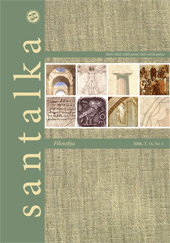Applying Natural Sciences to Studying History: The Kondratieff-Wave as Lifecycle of a Resource-Dependent Infrastructure Part III
Applying Natural Sciences to Studying History: The Kondratieff-Wave as Lifecycle of a Resource-Dependent Infrastructure Part III
Author(s): Lucy BadalianSubject(s): Philosophy
Published by: Vilnius Gediminas Technical University
Keywords: evolution; history; technology; resource; Kondratieff.
Summary/Abstract: In the first two articles of this series we introduced a model of evolutionary history, based on biological concepts, such as coenosis, geo-climatic zone, feeding chains etc. We showed that, historically, civilization evolved by gradually domesticating 6 distinct geo-climatic zones – corresponding to 6 traditional historic eras: from the first civilizations to the mass society of the 20th Century. We conclude the series with the study of economics within a zone. We show that each specific historic society evolved in order to take the best advantage of its unique resource, such as light loess soil of the first civilizations or oil of our days. The necessity of building a specific resource-dependent infrastructure, such as canals of antiquity, railways of the 19th century or highways of the 20th century, influenced every facet of life of the related society, from its leading technological style to the dominant form of ownership. The switch to a new resource was usually violent and could start well before the physical exhaustion of the older one – the latter’s growing scarcity and rising price generated a flurry of substitutes. In fierce competition between contenders the victory came on the basis of resource superiority. We show that the regular rhythms of K-waves, first noticed by Kondratieff on the example of prices in the 19th and the early 20th Centuries, correspond to the lifecycle of a resource-dependent infrastructure of an era.
Journal: Santalka: Filologija, Edukologija
- Issue Year: 14/2006
- Issue No: 3
- Page Range: 54-67
- Page Count: 14
- Language: English

